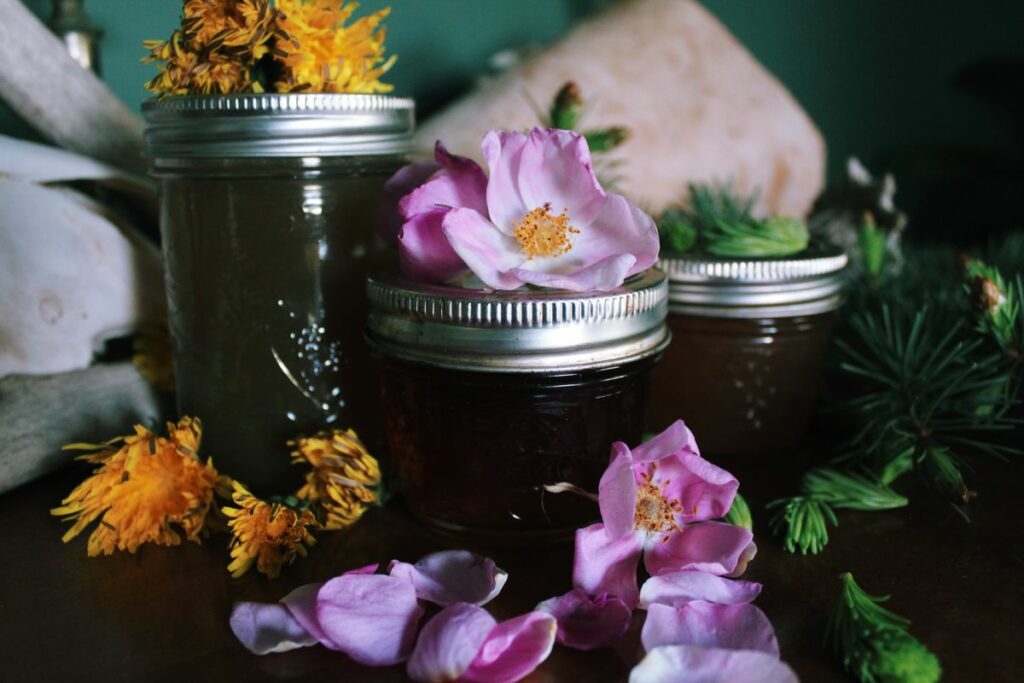One of my favourite parts about spring is how everything bursts into life – even within the season itself, so many plants and flowers have fleeting moments where they exist. Using the same base recipe, here are three different wild jellies that can help you capture of a small moment of time to enjoy all year round: dandelion (Taraxacum officinale), wild rose (Rosa acicularis) and spruce tips (Picea).
Advertisement
How To Make Spring Jelly
Advertisement
This is a small batch recipe that makes around four 125 ml jars.
Advertisement
You Will Need
2 cups rose petals OR 2 cups dandelion petals (all green removed) OR 3 cups spruce tips
2 1/2 cups cold water
1 tbsp lemon juice
3 1/2 tbsp low-sugar pectin
3/4 cup cane sugar
Gather and clean the desired ingredients. Rose petals are usually fairly clean when picking, spruce tips need the brown, papery husks removed from them and dandelions require all the green bits removed so that only yellow is left behind.
In a small pot, boil chosen plant matter with two-and-a-half cups of cold water for approximately five minutes. Strain through cheesecloth to remove all plant matter, leaving you with around two cups of liquid to then turn into jelly.
Bring the two cups of liquid, lemon juice and low-sugar pectin to a rolling boil. Add the sugar and bring back to a full rolling boil for two minutes. Stir constantly! Remove from heat.
Fill into sterilized jars and process as desired. If you are going to use the jelly within a few weeks, just keep it in the fridge. Otherwise, process jelly in a water bath canner to make shelf stable.
*For best results, follow the instructions on the box of pectin you use. Some say to add all the ingredients at once, others say to wait to add the sugar. Processing times in a canner will vary depending on the elevation you live at.
Some Things To Note
You may notice that your jellies are somewhat dull in colour and not at all vibrant like the plant material that they come from. That is 100 per cent normal; in fact, if you do see photos of jelly jars lined up with various shades of bright hues, there is a possibility that a bit of food colouring has been added to them. It’s all a personal choice, but for myself I want to keep it the way it came from nature, so I choose to see the beauty in the subdued.
When choosing an area to harvest any of the plants from, avoid areas that may be heavy with pollutants, such as roadsides, ditches, right of ways and even areas such as yards and parks, which may be contaminated with things such as herbicides and vehicle exhaust.
While the aforementioned plants are generally safe and tolerated by most healthy adults when consumed in moderation, consult a doctor before consuming if you have concerns, are a child or are pregnant/nursing. If you have an allergy to plants in the Asteraceae family, be aware that dandelion may trigger an allergic reaction, and for some people you may find that you have an allergy to spruce or rose.
